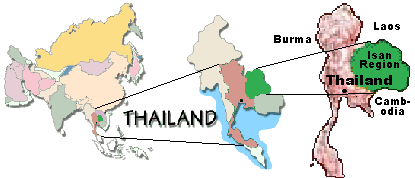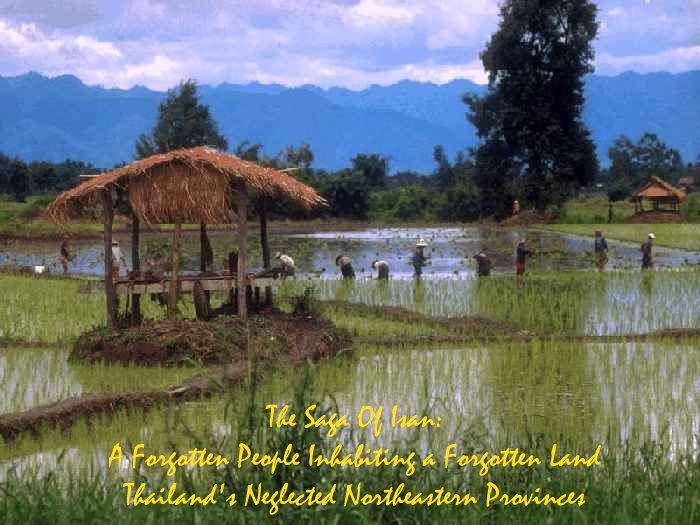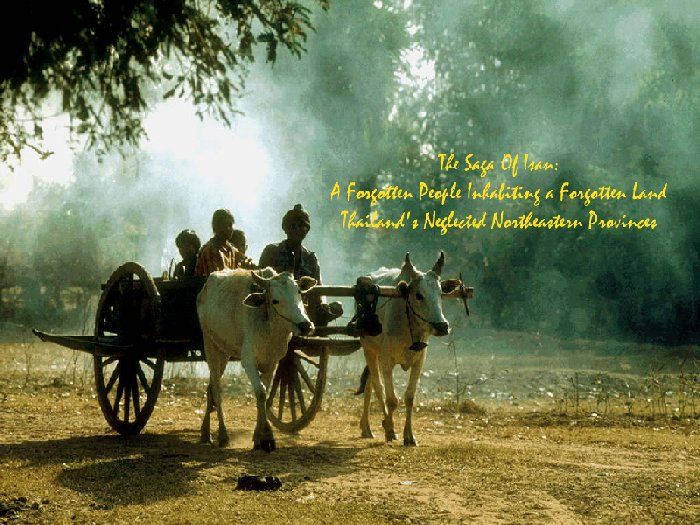Scroll Down For Link To Master's Degree Thesis








|
The village-dwelling Isan people of rural northeast Thailand are in an ongoing struggle for personal identity, prosperity, and equality, as well as a desire for respect and acceptance by their fellow countrymen. Presently over twenty-one million in population (as of 2004), the Isan people have taken the initiative over the last several decades to seize various opportunities and are currently emerging from their poverty-stricken agrarian roots and lowly social position to becoming the formally-recognized labor class of Thailand. This ongoing process is occurring despite long-standing economic exploitation and neglect, as well as hindrances placed in their way by their more urbane, class and status-conscious Central Thai cousins, who have customarily dismissed the Isan dwellers as being simpleminded and ignorant. Notwithstanding, their progress is now clearly evidenced by an increasing acceptance by the Thai, together with enjoying a greater significance on a national scale in socio-cultural, economic and political terms.
In this paper, the author attempts to track the progression of this qualitative transformation throughout its course, from beginning through to realization, along with addressing the various issues encountered during the transition period, followed by projected future challenges. |
|
Table of Contents
 Chapter I: Introduction to the Isan People and Region of Northeast Thailand
Chapter I: Introduction to the Isan People and Region of Northeast Thailand
 Chapter II: Origins and Historical Roots of the Isan Region and Its Inhabitants
Chapter II: Origins and Historical Roots of the Isan Region and Its Inhabitants
 Chapter III: Exploring Catalysts for Socio-Economic Change
Chapter III: Exploring Catalysts for Socio-Economic Change
 Chapter IV: Development Programs and Foreign Aid
Chapter IV: Development Programs and Foreign Aid
 Chapter V: Migratory Employment--Isan Becomes Proactive
Chapter V: Migratory Employment--Isan Becomes Proactive
 Chapter VI: Thailand's 1997 Economic Meltdown
Chapter VI: Thailand's 1997 Economic Meltdown
 Chapter VII: Isan--The New Millennium and Beyond
Chapter VII: Isan--The New Millennium and Beyond
 Tables and Maps
Tables and Maps
 Bibliography/Works Cited
Bibliography/Works Cited
|

"The amiable Isan people of rural Northeastern Thailand have for centuries eked out a subsistence-level existence in less-than-favorable conditions from a austere land with acidic soil that alternately suffers from either floods or droughts. As a result of learning to make do with what they have, they have developed a tough-skinned resiliency and light-hearted love of life that repudiates their indigent predicament." R.M.
